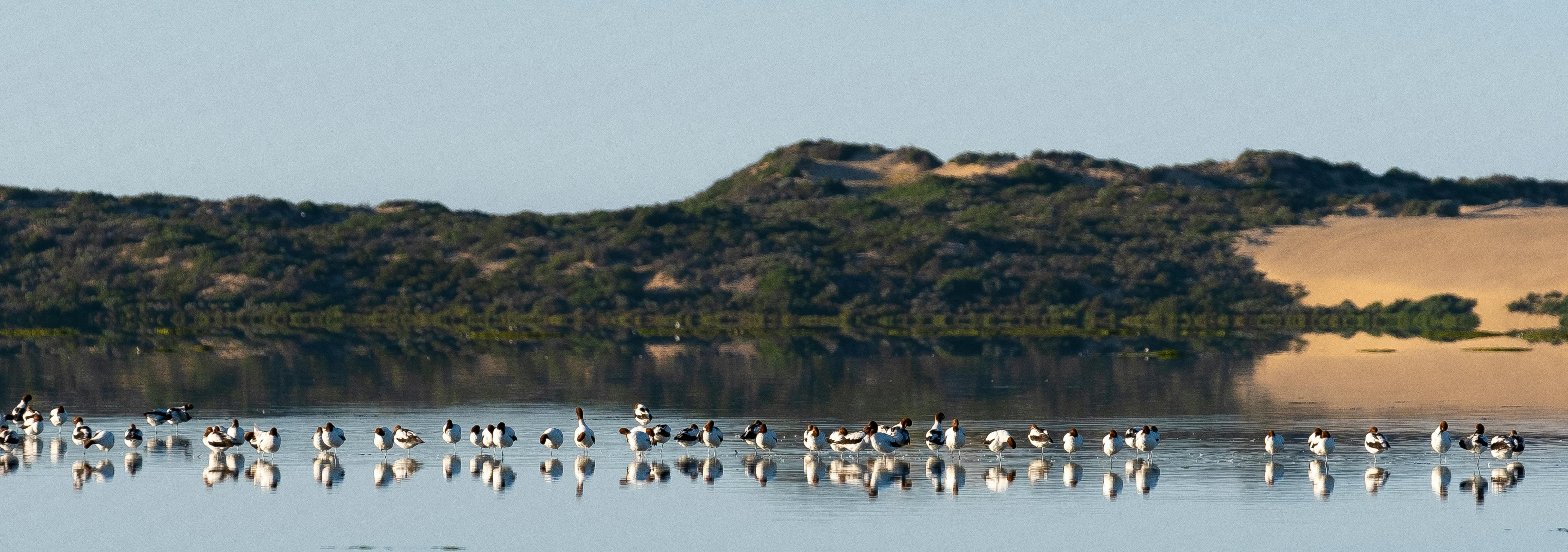FAQs
- Ramsar management plan (RMP) - outlines the actions to manage and promote the site’s ecological character and address threats to the wetland
- Ramsar information sheet (RIS) - describes the site’s ecological character
- Ramsar site boundary description and map
- Ecological character description (ECD).
- Resource condition targets - the measurable outcomes that management actions at the site are hoping to achieve.
- Management triggers - a limit that, if reached, requires specific actions to be undertaken to prevent the Limit or Acceptable Change (LAC) being exceeded. Management triggers are set at limits well below a LAC to allow the maximum chance to reverse the trigger.
- Management Actions - actions undertaken when the conditions of a management trigger are met. They include practical actions that aim to mitigate threats or risks to critical components, processes and services.
- location, boundary and tenure*
- justification for inclusion as a Ramsar site
- physical, ecological and hydrological features
- wetland types
- noteworthy flora and fauna
- conservation measures
- land use, recreation and tourism information.
- description of site location and boundaries*
- features that make up the site and data sources for those features
- process for ensuring accuracy and/or ground-truthing
- consultation processes
- land parcels and tenure (fully/partially included or excluded).
What is the Ramsar Convention on Wetlands?
The Ramsar Convention on Wetlands is an international intergovernmental treaty established in 1971 in Ramsar, Iran. The broad aims of the Ramsar Convention are to halt and, where possible, reverse the worldwide loss of wetlands and to conserve those that remain through wise use and management.
The Convention encourages the protection of representative, rare or unique wetlands, and wetlands that are important for conserving international biodiversity.
Sites that are designated as Wetlands of International Importance become known as Ramsar sites, and to ensure the best management outcomes for Ramsar wetlands, each site requires the following documents:
What is a Ramsar management plan?
A Ramsar management plan (RMP) outlines the management actions required to manage and promote a site’s ecological character and maintain the features that make a site internationally significant, and identifies how the site supports the region’s communities, industries and cultural values.
An RMP identifies priority values and threats to the ecological character of the wetland, targets for managing different parts of the site (resource condition targets) and triggers for taking action to protect the site’s environment (management triggers).
The RMP also outlines how the community will be engaged in decision-making and management programs for the site.
A RMP must comply with the Australian Ramsar Management Principles (outlined in schedule 6 of the EPBC Act) and is required to be updated every 7 years.
What does the terminology mean?
What is a Ramsar information sheet?
A Ramsar information sheet (RIS) captures essential information about the site and summarises why it is important. This information provides a baseline for measuring changes in the ecological character of the wetland.
The RIS comprises site-specific information including:
RIS are updated every 6 years (or sooner if there are significant changes to the site’s ecological character).
*The boundary description of a wetland in the RIS legally defines the ‘declared Ramsar wetland’ site boundary for the purpose of the Environment Protection and Biodiversity Conservation Act 1999 (EPBC Act) in Australia.
What is a Ramsar site boundary document?
The site boundary documents the site’s geographical boundary, and clearly shows the decision-making process and the intent of boundary decisions.
Information includes:
*For legal purposes, it is the detailed boundary description included in the RIS that defines the ‘declared Ramsar wetland’ and sets the legal boundaries under the Environment Protection and Biodiversity Conservation Act 1999 (EPBC Act), rather than the Ramsar site boundary and map. Therefore, the written description of the boundary must be included as part of the RIS.
What is an ecological character description?
An Ecological character description (ECD) is a technical document that describes the wetland’s ecological character in more detail than the RIS. An ECD provides a baseline description of the wetland at a given point in time, and provides information about the critical environmental features (components and processes) and benefits of the site.
As site conditions may change naturally over time, the ECD also includes limits of acceptable change (LAC), in order to describe what is known about the site’s natural variability (or the expected range for artificial wetlands). This information can be used to help ensure the ecological character of the site is maintained.


